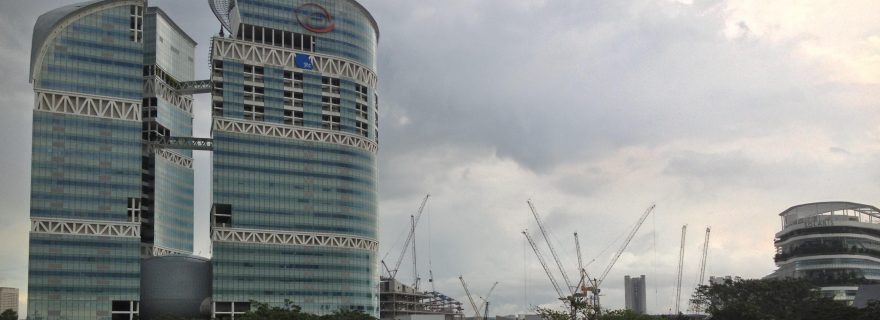Locating Futures: what do we do when the grass is greener on the other side?
What is actually going on when we say that the future is happening here or there or somewhere else? Zane Kripe describes ethnographic encounters in Southeast Asia where people discuss where the future of technology and business is unfolding.
During my first, exploratory trip to Southeast Asia in early 2010 I traveled from Indonesia to Singapore, from Malaysia to Burma, in each country meeting people passionate about web technologies. Many of them had started, or were planning to start, their own internet-based businesses. The goal of my visit was to familiarize myself with the environment and get to know the people in technology communities, so that I could start my research project on Future and Technology in Southeast Asia. Fairly quickly I came to realize that Singapore played a crucial role in the experiences and perceptions of technology enthusiasts around the region.
Technology geeks I met in Indonesia talked excitedly about the times they visited Singapore and were impressed with not only the high rise buildings but also with the technology/business community there, from which they adopted specific organization practices. Malaysian founders of web startups explained to me that it is much more reasonable to incorporate their businesses in Singapore, because the legal processes are much faster there and the tax regime more favorable. One Malaysian founder, who had worked in Silicon Valley before returning to Malaysia and starting his company, explicitly said that running a business in Singapore as compared to Malaysia would be like facing the real world. For him, Singapore has the predatory competition and flow of finance that he associates with business in the real world. Some of the Burmese technology enthusiasts told me how they aspired to move to Singapore and work there in the future, because of the wealth this move could offer.
The sense of Singapore being regarded as at the real-time or more into the future as compared to the rest of region was strong during my initial conversations with people in the field of technology around the region. Many people I spoke to noted that everything happens much faster in Singapore- “Even escalators move faster there,” as one of my friends in Indonesia commented. Of course people also scoffed at the Singaporean laws and noted that Singapore is too organized to be enjoyable. Yet, the general sense was that Singapore is a more achievable version of Silicon Valley, which is often regarded as the ultimate location of technology innovation and business, always one step ahead of the rest of the world.
When I arrived in Singapore, I was eager to learn how people who supposedly already live in the future think about Singapore and other locations in the world. Many of the Western expatriates I met in technologist circles proclaimed that this is Asian century and Singapore is the location from which to capitalize on the emerging global future. This belief, combined with the good living conditions that English-speaking Singapore offers, was part of the reason why many of them had moved there in the first place. Interestingly, the mere presence of such expatriates in the technology space was also pointed out to me as an indicator that the future of the Singaporean tech space is bright.
Yet, many people in Singapore were also very skeptical about Singapore’s future. They argued that when it comes to technology and entrepreneurship, Singapore needs to catch up with the developed world if it is to compete in the global economy. Singapore was described as too sterile for innovation, too small for starting a high growth business, and/or the people too conservative to be willing to do what it takes to start a truly innovative technology business. In these stories the future was located either as an exclusive property of Silicon Valley, or seen as attainable through cooperation with other countries in the region and/or by major shifts in the norms and values of the society.
What these encounters highlight is that particular futures (in this case futures related to technology innovation and business) are often imagined as unfolding or already being in effect in particular locations. Echoing science fiction writer William Gibson when he said “The future is already here – it's just not evenly distributed,” the people I met spoke of a fragmented landscape with a variety of locations, each characterized by its ability to actualize futures conducive to technology business. These geographical imaginaries seem to be not only structured along the lines of what Lucy Suchman has called reproductions of “neocolonial geographies of center and periphery” (2011:2), but also actively inform people’s understandings of the world and the decisions they make with regard to their lives (e.g., moving to a particular location, setting up a business in one location rather than another, engaging in certain activities rather than others, etc.). Thus, in my research on the aspirations linked to the so-called knowledge economy, I try to explore in more detail how such geographical imaginaries inform the lives of technology enthusiasts, and enable as well as disable certain social positions and actions.
References: Suchman, Lucy (2011) "Anthropological Relocations and the Limits of Design." Annual Review of Anthropology 40: 1-18



0 Comments
Add a comment